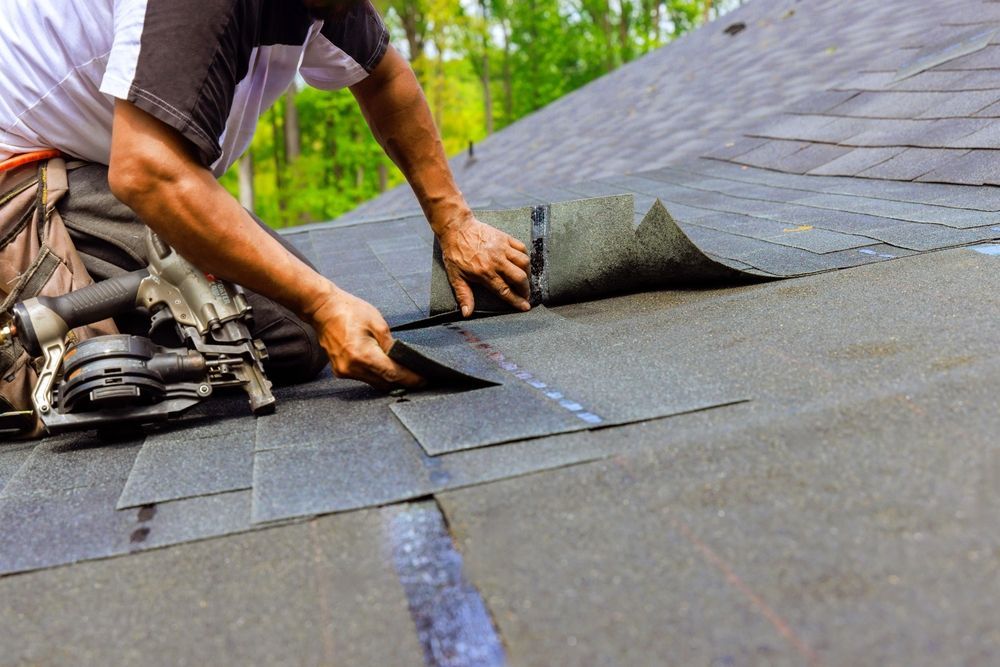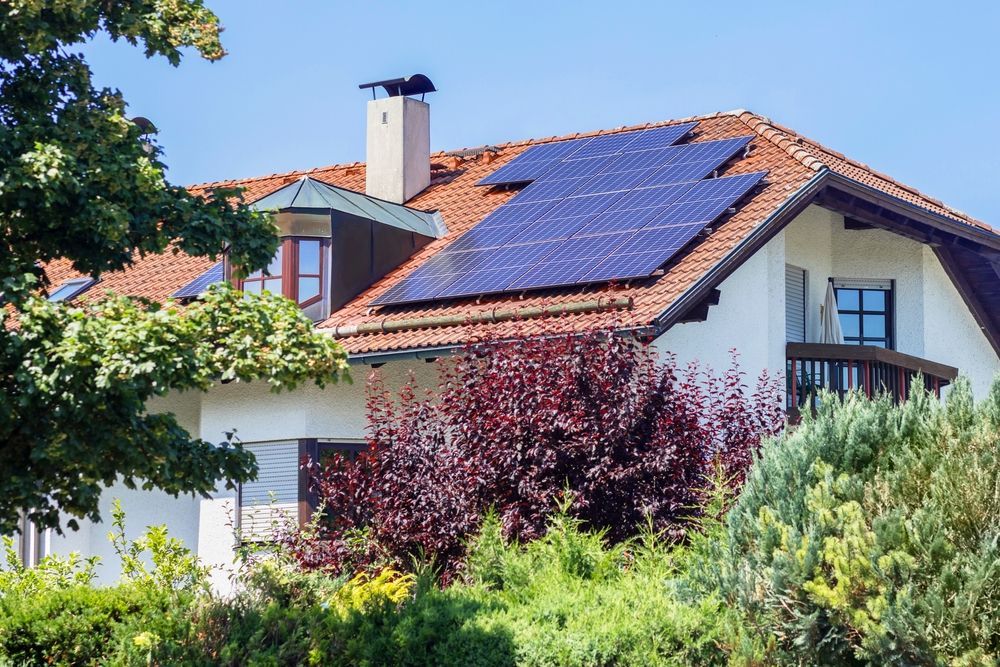Energy Efficient Roofing: How to Save Money and the Environment
Energy-efficient roofing offers a practical solution to reduce energy bills and support a more sustainable future. Whether you’re building or upgrading, the right roof can have a significant impact on energy performance and reduce your home’s carbon footprint. With advancements in materials and design, energy-efficient roofs provide both long-term savings and environmental benefits, making them a smart investment for any homeowner.

What Is Energy Efficient Roofing?
Energy-efficient roofing is designed to minimize heat absorption and maximize energy savings. These roofs use advanced materials that reflect sunlight and improve insulation, which lowers the need for heating and cooling. Reducing energy consumption not only leads to lower utility bills but also helps homeowners reduce their environmental impact.
Key Features of an Energy-Efficient Roof
- Solar Reflectance Index (SRI): SRI measures how well a roof reflects solar radiation and emits absorbed heat. A higher SRI means less heat is absorbed, helping to keep homes cooler and reduce energy costs, particularly in warmer climates.
- Roof Ventilation and Insulation: Effective ventilation ensures consistent airflow, while high-quality insulation reduces heat transfer. Together, these elements help regulate indoor temperatures and improve energy efficiency throughout the year.
How Does Energy Efficient Roofing Work?
Reducing Heat Absorption
Roofs with high reflectivity reduce heat absorption by reflecting a greater portion of sunlight away from the surface. This reduces the need for air conditioning during hot months, lowering overall energy consumption.
Improving Airflow and Reducing Heat Transfer
Proper ventilation and insulation work together to prevent excessive heat from entering or escaping the home. This balanced system reduces the strain on heating and cooling systems, helping to maintain a consistent indoor temperature and boosting overall efficiency.

The Benefits of Energy-Efficient Roofs
Energy-efficient roofs offer significant long-term benefits that make them a worthwhile investment for homeowners looking to improve both their home's performance and environmental impact.
Lower Energy Bills
By effectively reflecting sunlight and minimizing heat transfer, energy-efficient roofs reduce the need for constant heating and cooling. This translates into noticeable savings on energy bills, particularly during extreme weather conditions.
Positive Environmental Impact
With less energy consumption comes a reduction in greenhouse gas emissions, helping to lower your home's carbon footprint. Energy-efficient roofs contribute to a more sustainable environment, supporting broader efforts to combat climate change.
Enhanced Roof Durability
Many energy-efficient roofing materials, such as metal or tile, are built to last. These materials resist weather-related damage, UV rays, and heat, reducing the need for repairs and extending the overall lifespan of the roof. This durability offers long-term cost savings and peace of mind.
Common Types of Energy-Efficient Roofing Materials
Choosing the right roofing material is key to maximizing energy efficiency. Each material offers unique benefits in terms of heat reflectivity, durability, and overall performance.
Metal Roofing
Metal roofs are highly reflective, often boasting high Solar Reflectance Index (SRI) values. This makes them excellent for deflecting sunlight and reducing heat absorption. Metal roofing is also long-lasting, durable, and typically made from recyclable materials, further enhancing its environmental appeal.
Tile Roofing
Tile roofing, particularly clay and concrete tiles, provides natural insulation and high heat resistance. Tiles are great for hot climates as they help keep homes cool by allowing air to circulate beneath the roofing surface.
Asphalt Shingles
Energy-efficient asphalt shingles are designed with special coatings that enhance their reflective properties. These shingles are an affordable option for homeowners looking to improve energy efficiency without breaking the bank.
Slate Shingles
Slate is a dense, durable material that offers good insulation and resists heat absorption. While more expensive upfront, slate shingles are extremely long-lasting and environmentally friendly, requiring less frequent replacement.
Green Roofs
Green roofs involve planting vegetation over a waterproof membrane, providing natural insulation and absorbing heat. They also help manage stormwater runoff and improve air quality, making them both energy-efficient and environmentally beneficial.
Solar Roofing Shingles
Solar shingles integrate solar panels into the roofing material, allowing homeowners to generate clean energy while also benefiting from a cooler, more energy-efficient roof. These innovative shingles combine energy efficiency with renewable energy production, offering substantial long-term savings.
How to Upgrade an Existing Roof for Better Energy Efficiency
If you’re not ready for a full roof replacement, there are several effective ways to upgrade your existing roof to improve energy efficiency. These enhancements can significantly reduce energy use and make your home more comfortable.
Cool Roof Coatings
Cool roof coatings are reflective paints or sealants applied to the surface of your roof. They reflect more sunlight and absorb less heat, helping to lower indoor temperatures and reduce air conditioning costs, especially in hot climates.
Installing Solar Panels
Adding solar panels is an excellent way to increase energy efficiency and reduce your reliance on traditional energy sources. Solar panels can harness renewable energy while providing additional shade to the roof, keeping it cooler and enhancing its overall efficiency.

Advanced Roofing Underlayments
Upgrading to advanced roofing underlayments, like radiant barriers or reflective insulation, helps reduce heat transfer through the roof. These underlayments act as a protective layer beneath the roofing material, reducing heat gain in summer and heat loss in winter.
Roof Ventilation Upgrades
Proper ventilation allows hot air to escape from your attic, preventing heat buildup that can make your home less energy-efficient. Upgrading or adding roof vents improves airflow and keeps your home cooler, reducing the load on your HVAC system.
Is an Energy-Efficient Roof Expensive?
The cost of an energy-efficient roof can vary, but it’s important to weigh the initial investment against the long-term savings and benefits. While some materials may have higher upfront costs, the reduction in energy bills and extended roof lifespan often make them cost-effective in the long run.
Upfront Costs vs. Long-Term Savings
Energy-efficient roofing materials, such as metal or solar shingles, typically come with higher initial costs. However, the significant reduction in heating and cooling expenses can offset this over time. Many homeowners find that energy-efficient roofs pay for themselves through lower utility bills, often within a few years.
Energy Efficient Roofs vs. Cool Roofs: What's the Difference?
While energy-efficient roofs and cool roofs both aim to reduce energy consumption, they achieve this in different ways. Understanding their differences can help you choose the best option for your home’s needs and climate.
Energy-Efficient Roofs are designed to minimize energy use by improving overall insulation and reducing heat transfer. These roofs often feature materials that reflect sunlight, improve ventilation, and prevent heat buildup, making them effective year-round in both hot and cold climates. Energy-efficient roofs not only help lower energy bills but also contribute to long-term sustainability by reducing greenhouse gas emissions.
Cool Roofs, on the other hand, are specifically engineered to reflect more sunlight and absorb less heat than standard roofs. This makes them particularly effective in hot climates, where reducing heat absorption is crucial. Cool roofs typically have higher Solar Reflectance Index (SRI) ratings, which keeps homes cooler and reduces the need for air conditioning. However, cool roofs may not offer as much benefit in colder climates where heat retention is also important.
How to Choose the Best Energy-Efficient Roof for Your Home
Selecting the right energy-efficient roof requires considering several factors that affect your home's overall energy performance. Key considerations include your climate, the design of your roof, and even the color of the materials you choose.
Climate Considerations
The local climate plays a significant role in determining the best roofing option. In hot, sunny climates, materials with high reflectivity, like metal or cool roofs, help keep your home cooler by reflecting sunlight. In colder regions, roofs that provide strong insulation and retain heat, such as slate or tile, can help reduce heating costs.
Roof Shape and Design
The shape and pitch of your roof also affect energy efficiency. Steeply pitched roofs tend to shed water and snow more easily, which is ideal for colder climates, while flat or low-slope roofs can benefit from additional insulation and ventilation. Roof design also impacts how well airflow is managed, which contributes to better temperature regulation.
Color Choices: Light vs. Dark Roofs
The color of your roofing material influences how much heat is absorbed. Lighter-colored roofs reflect more sunlight, helping to keep homes cooler in warm climates. Darker roofs, on the other hand, absorb more heat, which may be more suitable in regions where heat retention during the winter is important. Choosing the right color based on your climate can enhance your roof's energy efficiency.
The Bottom Line
Energy-efficient roofing is an excellent investment for homeowners looking to save money and reduce their environmental impact. By choosing materials that reflect sunlight, improve insulation, and enhance ventilation, you can significantly lower energy bills, increase home comfort, and extend the life of your roof. Whether you’re considering a full roof replacement or upgrading an existing one, energy-efficient options provide long-term benefits for both your wallet and the planet.
With the right roofing solution, you can contribute to a more sustainable future while enjoying the immediate perks of a more efficient home. For expert advice and to find the best energy-efficient roofing contractors in your area, explore our directory to connect with reputable contractors who specialize in energy-efficient roofing solutions.


